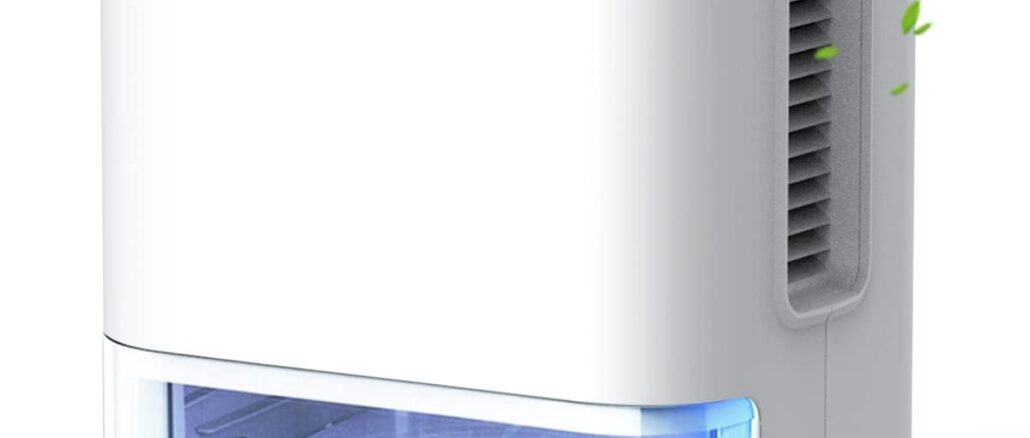
What is a Dehumidifier? Dehumidifiers reduce indoor humidity levels to a comfortable level. They help protect your furniture and belongings from damp, prevent mold and mildew growth and control dust mite populations. They also provide allergy relief and odor control.
These devices work by extracting moisture from the air and collecting it in a water tank or drip tray. Then, the dry air is reheated and vented back into your room. The most common type is the compressor-based dehumidifier. These use a refrigerant to suck the moisture out of the air and into a disposal tank.
Dehumidifiers are most effective in heated rooms. Without heat, the cold surface of a coil may start to freeze over, and the unit will waste energy defrosting the coils rather than extracting moisture from the air.
Working Principles of a Dehumidifier
The goal of dehumidifiers is to get your home’s humidity levels in the ’Goldilocks zone’, not too high and not too low. Too much moisture invites mold and mildew to set up shop, and can cause flaking paint, rusting equipment, and other damage.
Most dehumidifiers extract excess moisture from the air by running it over cold coils (similar to a refrigerator) and collecting water that condenses onto them in a drip tray or bucket. This water is then emptied into a separate water tank, which you’ll have to empty regularly, ideally several times a day.
The rest of the dry air is then heated up by a coil inside the dehumidifier, and then propelled back into the room as clean, dry air. Some models may use a multi-effect H/D system with multiple evaporator and condenser chambers. A brief overview of Mollier (h-x) diagrams and psychrometric charts, used in drying, along with mathematical models of single effect and multiple effect H/D configurations is presented. This information is useful in calculating the relative humidity of the air in the two evaporator and condenser compartments.
Uses of a Dehumidifier
Dehumidifiers are used to control moisture levels in rooms and spaces, especially where mold or mildew is a problem. They work by drawing air in, cooling it to condense the moisture, and then reheating and releasing warm dry air. This prevents mould growth by ensuring that the air is too dry for spores to form.
Keeping the humidity in your home low is good for the structural integrity of the house, as well as for health and comfort reasons. It can also reduce the number of dust mites in the house and decrease the occurrence of respiratory problems like allergies or asthma.
Dehumidifiers are often used to help with the cleanup process following a flood or water leak. They can be especially useful in basements, crawl spaces and bathrooms. The water that the dehumidifier collects is considered greywater, and can be reused for watering houseplants or other plants. You can even use it to wash dishes or laundry, although you should be careful not to allow the greywater to come into contact with food.
Applications of a Dehumidifier
Dehumidifiers are particularly useful in helping dry out buildings after a flood. They also prevent mold, reduce bacterial growth and control dust mites. They are an important part of a clean air strategy for asthma sufferers.
During operation, the air is drawn in and passed over cold coils (similar to an AC system’s evaporator coils). The water in the air condenses on the cool surface of these coils and is deposited into a drip tray. The dehumidifier then blows the dry air out through hot coils to reheat to room temperature.
The humidity of the room is monitored by a humidistat, which is equipped with alternate metal conductors that develop electrical resistance as the relative moisture level changes. The relay amplifier is triggered by this change to turn on the fan compressor and dehumidifier’s evaporator coils.
Portable dehumidifiers consume 160 kWh per month on average, which is more than the typical refrigerator but less than the average air conditioner, which eats up 300 kWh per month. They are also less expensive to run than most furnaces and central heating systems.
How to Fix a Dehumidifier
Besides the occasional emptying of the collection tank and cleaning, portable dehumidifiers require very little maintenance. Most models come with a port at the bottom or on the back to allow you to drain it directly into an existing drain line.
Some manufacturers advertise their units for a certain square footage while others use cubic footage which takes all dimensions into account. Whether a dehumidifier is worth repairing or a replacement is better depends on the unit type and its value.
Servicing and Repair of Dehumidifier
Unlike simple appliances like water heaters, dehumidifiers are complex devices that require regular servicing and repair to ensure they work at their optimal level. They have several parts and components that can get damaged or stop working altogether. Some of these problems can be quite easy to fix, while others may need professional help.
The most common problem with a dehumidifier is when it stops collecting water. This can be a result of an issue with the drainage hose or it could be caused by a faulty humidity sensor. Dehumidifiers that are constantly running can also be a sign of an overheating compressor. If you’re noticing frost on any of the components of your dehumidifier, it is time to call an expert for a repair.
While most people set their dehumidifier up and forget about it, emptying the water collection tank daily or every few days is essential for it to continue to work properly. When these tasks are neglected, the dehumidifier will start to collect dust and dirt, which can block its evaporator coils from absorbing moisture from the air.